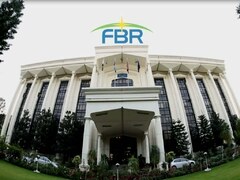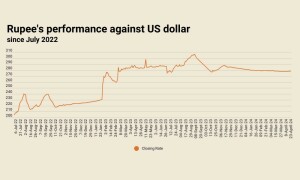The cat and mouse game reaches its climax. It seems banks may blink first. Those who were eyeing buying bonds at 13 percent are now fearing that they may lose the gravy train altogether. Greed is turning into fear. The sharp shift in monetary policy stance is a bold move and appears to be delivering on its objective. Last week’s T-Bill and PIBs auctions certainly seem to suggest so. Secondary markets yields are down by 54 bps to 74 bps in 6M to 10Y instruments.
Last week’s monetary policy was supposed to be a non-event. SBP had already indicated a pause at several forums. Yet, some hawks in the market expected 25-50 bps hikes in the policy rate. Their conviction for further tightening came from rising oil prices. But SBP surprised everyone. Not only was no change expected; SBP also flipped its forward guidance.
This is second sharp turn in three months. In November’s policy review, SBP disregarded its forward guidance of accommodative stance in the near term by a surprise 150 bps increase. That was followed by another 100-bps increase in December. The tone had changed in November and seeing the slippage in current account and rising inflation, market participants bet on further rise of 75-100 bps in March 2022, and market yields began incorporating the rise.
Till December, the end goal was to reach mildly positive real interest rates on forward looking basis. That has changed in Jan where SBP has pegged the medium-term inflation target to 5-7 percent, and the MPC is of the view that current real interest rates on forward looking basis are appropriate to reach the changed end goal. Some may get confused by the jugglery of stances in three policy reviews in as many months. Others are of the view that market should wait and see before accepting the new forward guidance – as the credibility of forward guidance has come under fire.

But under the surface, the key determinant remains current account deficit; and within it, the imports number that shall determine the pace of economic growth. High frequency data between Septembers to November was very discomforting. Import bill also rose too fast. High growth momentum in days of rising commodity prices was not comfortable. That compelled SBP to act fast.
Now with 275 bps increase in rates, 15 percent currency depreciation and growing commodity prices, growth momentum has certainly slowed down. High frequency data is certainly suggesting so. The assertion to be confirmed or denied by upcoming import bill – PBS data is due in next two days. Nonetheless, inflation shall remain high for the time being.
Market pundits may argue that rising oil and other commodity prices may put further pressure on imports and inflation, and SBP may not be able to ignore these for far too long. SBP response is that there is a limit to the impact of higher rates. If the demand is already tapering off, it would instead be wiser to wait and see. Then the more important point is of fiscal response to rising twin deficits. The removal of tax exemptions and other measures in the mini budget, slashing of development spending, and passing on the oil prices rise to consumer have complemented the monetary policy stance. And too much of tightening could be counterproductive. The key is to maintain a delicate balance between inflation, growth, and external account stability.
That is the story. The market finally appears to be buying it. In the last week T-Bill auction, the cut-off yields are down by 68 bps, 56 bps in 6M, and 12M papers to 10.65 percent and 10.91 percent, respectively. The situation in PIBs is even better. Cut-off yields are down by 17 bps to 79 bps in 3Y, 5Y, and 10Y papers from the previous cut-off. The 10Y yield is now below 11 percent. The yield curve is flattening, and traders hope to buy at 13 percent now seem to be over. Let’s see how the situation evolves in months to come.























Comments
Comments are closed.